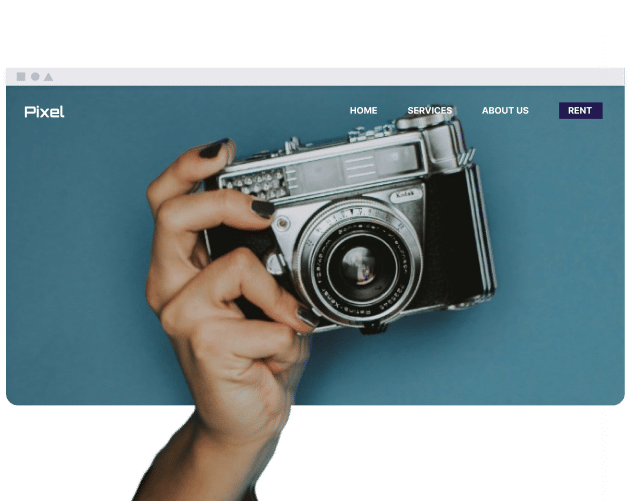Table of Contents
What are the key features of a website builder image library?
Image libraries in website builders normally categorize their visuals. These can cover different themes and categories, such as business, holidays, and sports. You might also find images in different styles, such as illustrations and photos.
If you need something specific for your brand, you should look at a website builder with advanced filtering tools. Search functionality is crucial, and tags/categories are also worth considering if you don’t want to spend significant amounts of time looking for visuals.
Before using any visuals in your content, you’ll need to look at where you’re allowed to use content. For example, some images may require that you attribute the creator. Check to determine whether visuals are available for personal or commercial use, too.
What makes an image library important in website builders?
Writing for online audiences requires keeping their attention, and it’s important to understand the effects of having too much text without a break. Using images can add natural breaks in your text and make readability easier; these need to be relevant to your content, though.
The images that you use in your content can take several forms, such as trying to get a specific emotion from your customers. Highlighting products and services, and how they work, is also something you should think about when choosing images.
Look through your whole website builder’s image library to ensure you find something that matches what you’re looking for. Adding new pictures on a regular basis is also essential; you want everything to be as relevant as possible. Consider also deleting outdated visuals, too, to ensure that everything is refreshed. Some of the situations in which you should do this are:
- Your product interface has changed.
- You’ve rebranded.
- You’ve entered a new market and want to appeal to a specific demographic.
What are image licenses and what are the different types out there?
Image licenses determine where you can and cannot use different visuals. Some of the most frequent ones you’ll encounter and should know are:
- Royalty-Free (RF): Unlimited use without attribution; restrictions (e.g. different platforms) might apply.
- Rights-Managed: You typically buy an image and can use it within certain conditions (e.g. buying from a stock image website); typically has per-use pricing.
- Editorial: For editorial use only (e.g. magazines and news websites).
Understanding the different image licenses is important for avoiding copyright infringement; if you’re unsure, contact the platform from which you found the picture.
How can image libraries be used to enhance websites?
Image libraries can have in-site editing tools, with cropping and other features; these should be used when necessary. It’s important to think about image libraries from the perspective of site speed and user experience; optimize your images for smaller sizes and faster loading where possible.
What are the common challenges users face with website builder image libraries?
Some of the different factors to consider when using and managing a website builder’s image library are:
- Updating: Carefully curate your images and update these when certain styles start to become outdated.
- Image Restrictions: Understand where you can use the visuals in your library and the terms of use.
- SEO: Consider the SEO tools available; alt texts are very important, for example.
Conclusion
Image libraries are an essential consideration if you wish to make your website and its content more visually appealing; make sure that the visuals you use aren’t generic. In-app editors, such as cropping and cutting, might limit the work required in different editing software; it’s important that you look for these before signing up.
You should also think about the SEO aspect within image libraries and search for solutions that offer these functionalities. Keeping your image library updated is also important, as is understanding the different types of licensing. Factor all of these into your image upload and library management choices.


